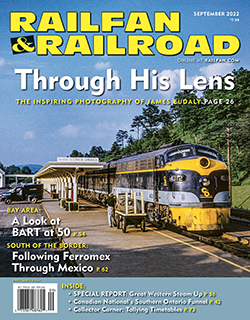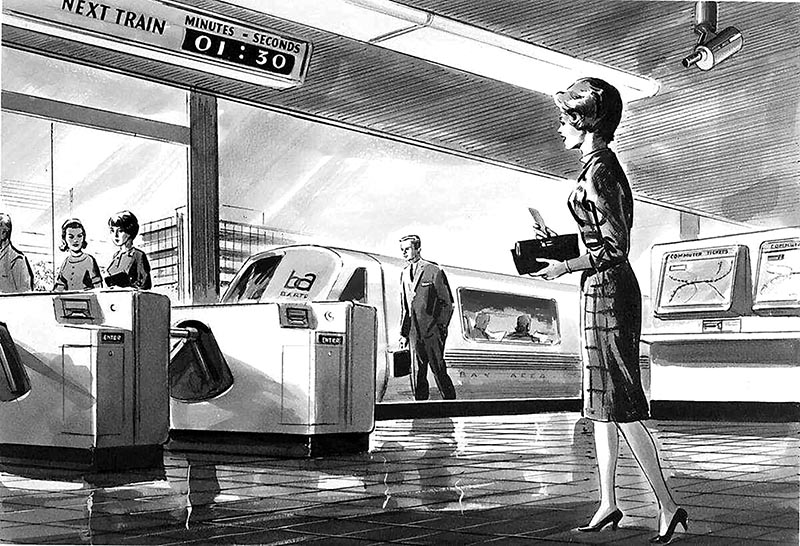 In the mid-1950s, urban rail transit in America was all but dead. Other than a few major cities like Chicago, Boston, Philadelphia, and especially New York, interurbans and streetcars were dying, or long gone. California’s Bay Area was no exception. While San Francisco held on to its municipally operated streetcars and cable cars, the regional connection of the Key System interurbans crossed the lower deck of the Bay Bridge for the last time in 1958.
In the mid-1950s, urban rail transit in America was all but dead. Other than a few major cities like Chicago, Boston, Philadelphia, and especially New York, interurbans and streetcars were dying, or long gone. California’s Bay Area was no exception. While San Francisco held on to its municipally operated streetcars and cable cars, the regional connection of the Key System interurbans crossed the lower deck of the Bay Bridge for the last time in 1958.
Against this background of decline, planners and politicians in the Bay Area made a quite audacious decision. Instead of accepting the end of regional rail transit, they began to plan a new, larger, more advanced system. Over the next 15 years, concepts became plans, plans became projects, and in 1972 the first trains were running. By the end of 1974, the initial 71.5-mile, four-line system was complete — the country’s first new urban rail transit system in generations built from the ground up.
The audacity did not end there. For better and for worse, BART’s planners and engineers, with federal encouragement, rethought every assumption about rail transit. Within the context of the time, this was logical — existing rail transit was failing or had disappeared in most cities. Moreover, it was mid-century America, an era defined by the science facts of supersonic jet planes, the “space race,” and the Apollo moon mission and the vibrant science fiction of “Star Trek” and Stanley Kubrick’s “2001: A Space Odyssey.” As a result, BART was meant from the beginning to be a part of the future, not an extension of the past. When touring the system in 1972, President Richard M. Nixon was quoted as saying it all “looked like NASA!”
This is not to say that BART is perfect. The system has many flaws and paradoxes. We should not diminish how the construction of BART’s original lines disrupted many neighborhoods and destroyed communities. In other places, lines were located along exurban freeways, hastening the very sprawl that undermines good transit. Further, many stations outside of central San Francisco were surrounded by a sea of asphalt parking lots when they should instead be hubs of retail, offices, and especially housing. Yet this is being addressed even now, as BART is engaged in a massive project to develop those urban lots into high-density residential communities.
BART has also adapted and grown over the years. One recent example is its “Fleet of the Future” cars that began to arrive in 2016. At present rates, the entire fleet of legacy cars, including the Rohr-built cars that opened the system, may be replaced by the end of 2023. An extension of the system southward by six miles will bring BART into San Jose’s Diridon station by the end of the decade, connecting to Caltrain, Amtrak, and eventually high-speed rail. Meanwhile, planning is well underway for a second crossing under the bay and new urban routes in Oakland and San Francisco.
In 1910, the architect Daniel Burnham gave a Chicago audience advice that has stood the test of time. “Make no little plans,” he cautioned, noting they have “no magic” and tend to be forgotten. Instead, he advised to “make big plans; aim high in hope and work, remembering that a noble, logical diagram once recorded will never die, but long after we are gone will be a living thing, asserting itself with ever-growing insistency.” Whenever I look at a system map for BART, I can’t help but think of those who laid it out in the ’50s and ’60s, and built it in the ’60s and ’70s. Their big plans, for all their many flaws, left a legacy that extends well into our century, and perhaps beyond.
—Alexander Benjamin Craghead is a transportation historian, photographer, artist, and author.


